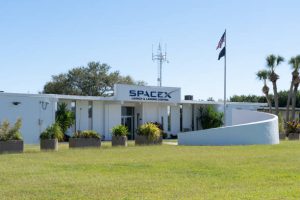
Elon Musk’s rocket company SpaceX was ready to try again at sending NASA’s next long-duration crew of the International Space Station to orbit on Thursday, about 72 hours after a first attempt was scrubbed due to a clogged filter in the launch system. Two NASA astronauts will be joined by a Russian cosmonaut and an astronaut from the United Arab Emirates for a six-month science mission made up of experiments ranging from human cell growth in space to controlling combustible materials in microgravity. The SpaceX launch vehicle, consisting of a Falcon 9 rocket topped with an autonomously operated Crew Dragon capsule called Endeavour, was set for liftoff at 12:34 a.m. EST (0534 GMT) from NASA’s Kennedy Space Center in Cape Canaveral, Florida. The four-man crew should reach the International Space Station (ISS), orbiting some 250 miles (420 km) above Earth, about 25 hours after launch, early on Friday morning. Monday’s initial attempt to send the crew to space was called off less than three minutes before liftoff time when launch teams detected a problem in the flow of engine-ignition fluid used to start the rocket’s main thrusters. NASA said the issue was remedied by replacing a clogged filter and purging the system. NASA said on Wednesday the mission was “go” for launch with a 95% chance of favorable weather conditions. “All systems are looking good for launch,” though teams were keeping an eye on weather along the spacecraft’s ascent path, SpaceX said on Twitter. Designated Crew 6, the mission marks the sixth long-term ISS team that NASA has flown aboard SpaceX since the private rocket venture founded by Musk – billionaire CEO of electric car maker Tesla (NASDAQ:TSLA) Inc and social media platform Twitter – began sending American astronauts to orbit in May 2020. The latest ISS crew is led by mission commander Stephen Bowen, 59, a onetime U.S. Navy submarine officer who has logged more than 40 days in orbit as a veteran of three space shuttle flights and seven spacewalks.

Fellow NASA Astronaut Warren “Woody” Hoburg, 37.
an engineer and commercial aviator designated as the Crew 6 pilot, will be making his first spaceflight. Crew 6 also is notable for its inclusion of UAE astronaut Sultan Alneyadi, 41, only the second person from his country to fly to space and the first to launch from U.S. soil as part of a long-duration space station team. Rounding out the four-man Crew 6 is Russian cosmonaut Andrey Fedyaev, 42, who like Alneyadi is an engineer and spaceflight rookie designated as a mission specialist for the team. Fedyaev is the latest cosmonaut to fly aboard an American spacecraft under a ride-sharing deal signed in July by NASA and the Russian space agency Roscosmos, despite heightened tensions between Washington and Moscow over Russia’s invasion of Ukraine. The Crew 6 team will be welcomed aboard the space station by seven current ISS occupants – three U.S. NASA crew members, including commander Nicole Aunapu Mann, the first Native American woman to fly to space, along with three Russians and a Japanese astronaut. The ISS, about the length of a football field and the largest human-made object in space, has been continuously operated for more than two decades by a U.S.-Russian-led consortium that includes Canada, Japan and 11 European countries. The outpost was conceived in part as a venture to improve relations between Washington and Moscow following the Soviet Union’s collapse and the end of Cold War rivalries that gave rise to the original U.S.-Soviet space race in the 1950s and 1960s.